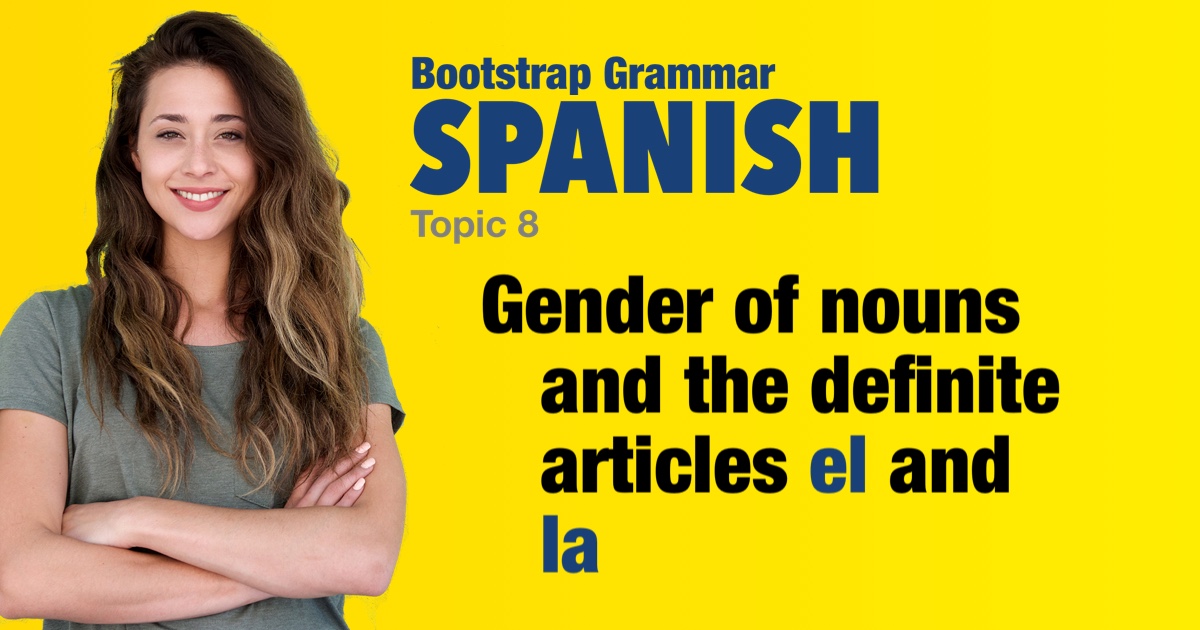Spanish grammar - Gender of nouns and the definite articles el and la |
|||
|
|||
In Spanish, nouns are classified as either masculine or feminine. Gender affects all aspects of the language including articles, adjectives, and pronouns that are used with the noun. In this topic we discuss the definite article - that is the equivalent of 'the' - whose form depends on both gender and number. The 'singular definite articles' are: • The masculine singular definite article is el • The feminine singular definite article is la |
| Examples: | |
|
El hombre está aquí.
The man is here.
|
|
|
La mujer está triste.
The woman is sad.
|
|
|
El estudiante está feliz.
The student (masculine) is happy.
|
|
|
La estudiante está feliz.
The (female) student is happy.
|
|
|
El hombre no está lejos.
The man is not far away. |
|
|
La mujer está cerca.
The woman is nearby. |
|
|
El estudiante no está aquí.
The student (masculine) is not here. |
|
|
La estudiante no está allí.
The student (feminine) is not there. |
|
|
El español es amable.
The Spaniard (masculine) is kind. |
|
|
La española es feliz.
The Spaniard (feminine) is happy. |
|
 |
|



 uses the definite article
uses the definite article 